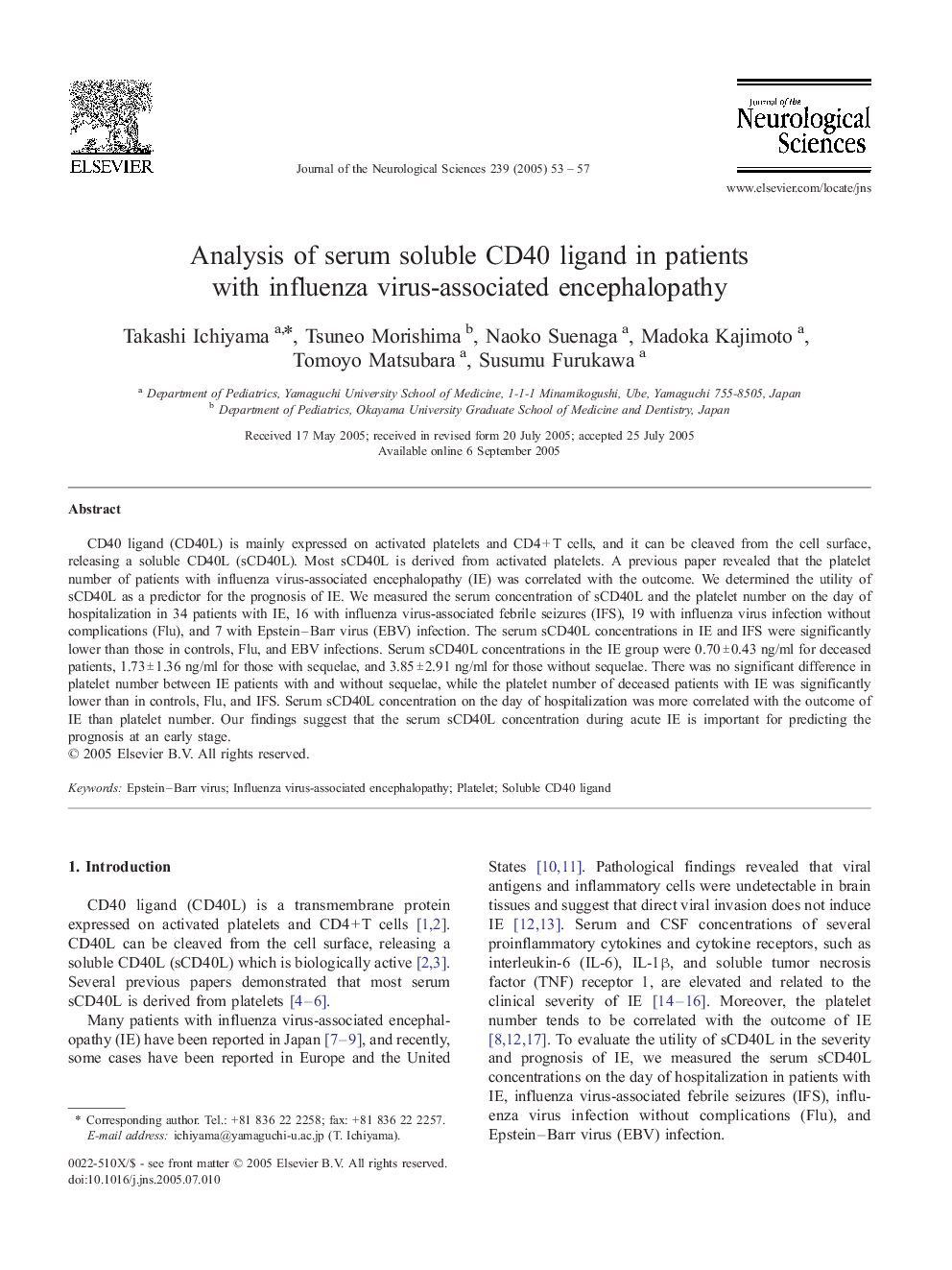| Article ID | Journal | Published Year | Pages | File Type |
|---|---|---|---|---|
| 10742414 | Journal of the Neurological Sciences | 2005 | 5 Pages |
Abstract
CD40 ligand (CD40L) is mainly expressed on activated platelets and CD4 + T cells, and it can be cleaved from the cell surface, releasing a soluble CD40L (sCD40L). Most sCD40L is derived from activated platelets. A previous paper revealed that the platelet number of patients with influenza virus-associated encephalopathy (IE) was correlated with the outcome. We determined the utility of sCD40L as a predictor for the prognosis of IE. We measured the serum concentration of sCD40L and the platelet number on the day of hospitalization in 34 patients with IE, 16 with influenza virus-associated febrile seizures (IFS), 19 with influenza virus infection without complications (Flu), and 7 with Epstein-Barr virus (EBV) infection. The serum sCD40L concentrations in IE and IFS were significantly lower than those in controls, Flu, and EBV infections. Serum sCD40L concentrations in the IE group were 0.70 ± 0.43 ng/ml for deceased patients, 1.73 ± 1.36 ng/ml for those with sequelae, and 3.85 ± 2.91 ng/ml for those without sequelae. There was no significant difference in platelet number between IE patients with and without sequelae, while the platelet number of deceased patients with IE was significantly lower than in controls, Flu, and IFS. Serum sCD40L concentration on the day of hospitalization was more correlated with the outcome of IE than platelet number. Our findings suggest that the serum sCD40L concentration during acute IE is important for predicting the prognosis at an early stage.
Related Topics
Life Sciences
Biochemistry, Genetics and Molecular Biology
Ageing
Authors
Takashi Ichiyama, Tsuneo Morishima, Naoko Suenaga, Madoka Kajimoto, Tomoyo Matsubara, Susumu Furukawa,
